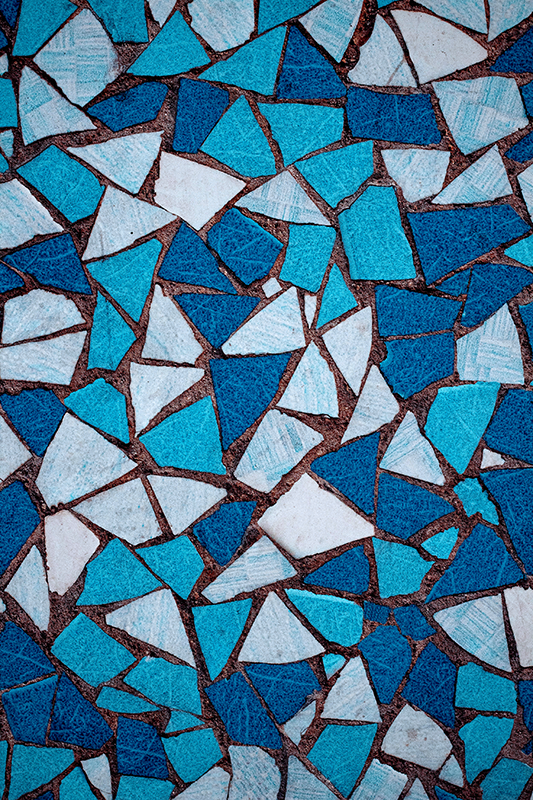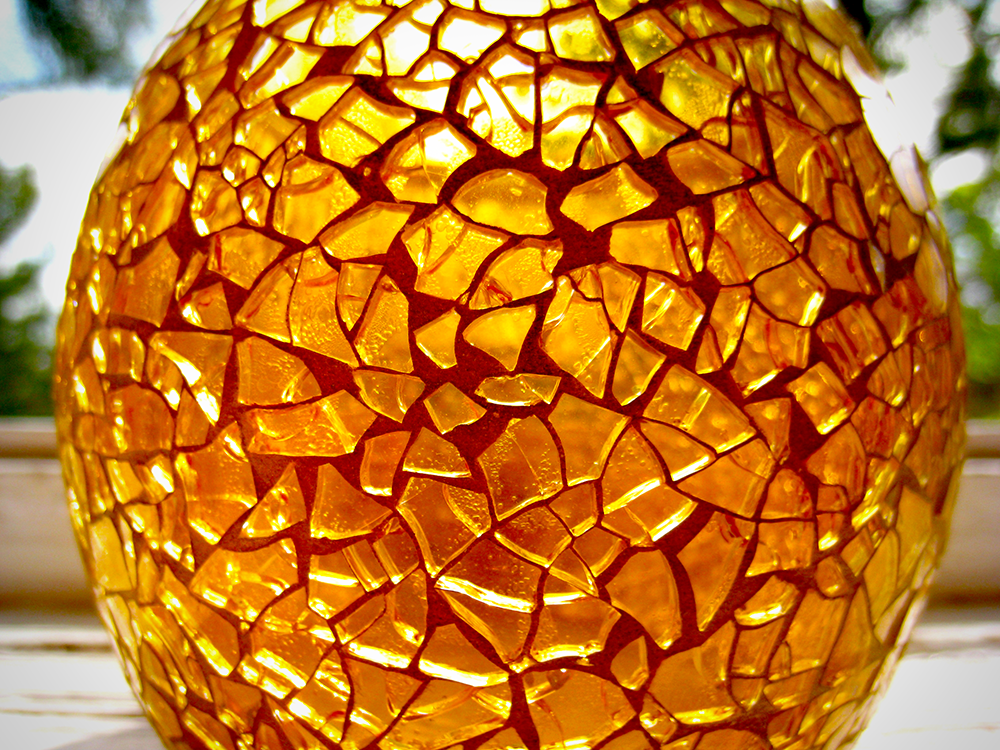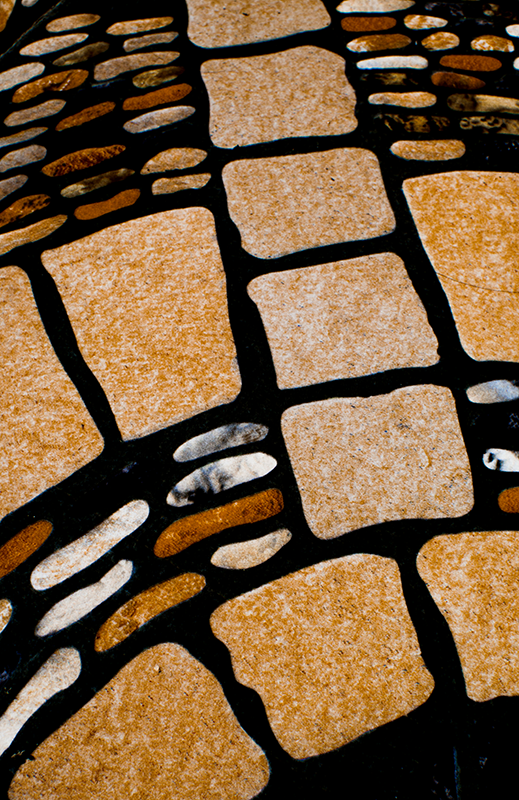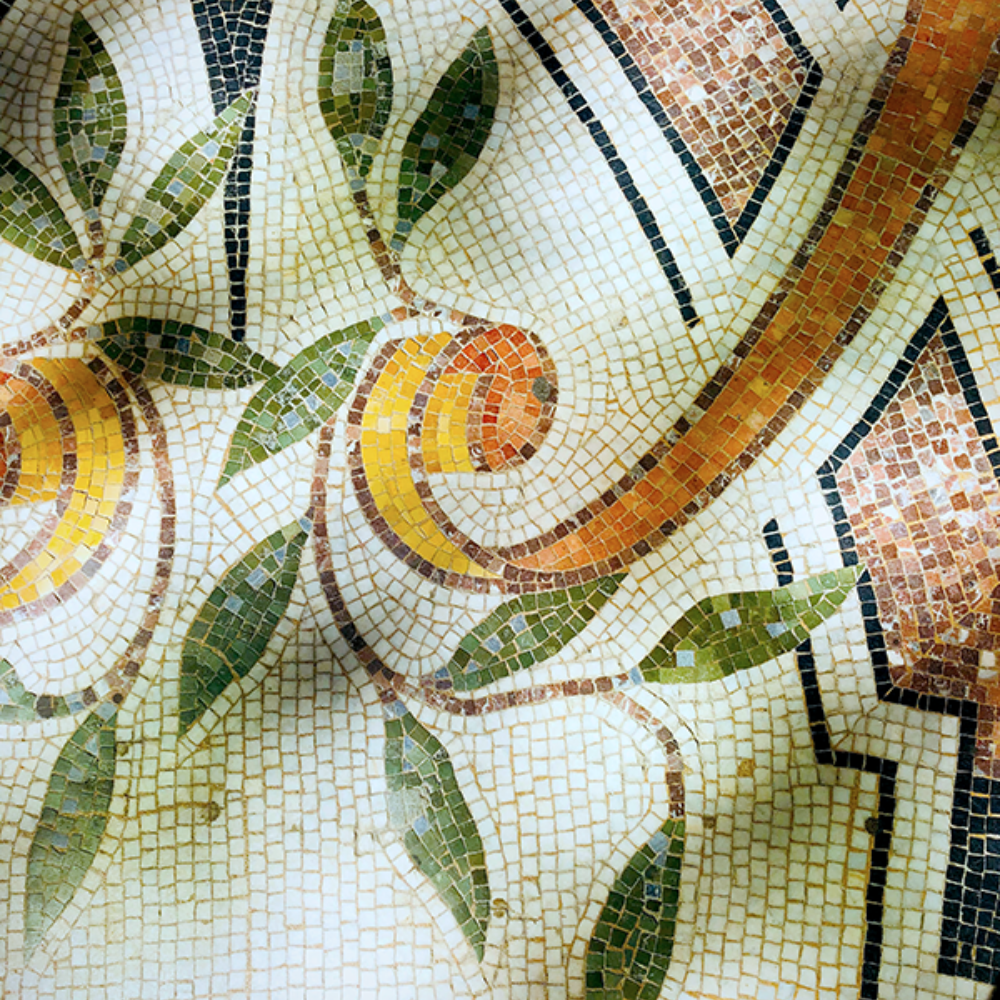Mosaic art, an ancient decorative technique, involves creating images or patterns with small pieces of colored glass, stone, or other materials.
It has been beautifying spaces from ancient Greek floors to Byzantine churches and modern public installations.
Mosaic art is not just a craft; it's a captivating expression of creativity that has adorned everything from the palatial floors of ancient empires to the intricate walls of modern art galleries.
This art form, rich in history and bursting with color, uses tiny pieces of material to create breathtaking patterns and imagery.
Let's dive deep into the essential elements of mosaic art, shedding light on the materials, techniques, and historical contexts that make this art form truly mesmerizing.
Join us as we unveil the secrets behind the stunning visual symphony of mosaics!
Key Takeaways:
- Mosaic art is a decorative form that uses small pieces of materials assembled to create intricate designs.
- Key elements include various materials like ceramic tesserae, glass, and natural stones, and techniques such as the indirect method.
- Understanding the historical and cultural significance of mosaics can enhance appreciation for this art form.

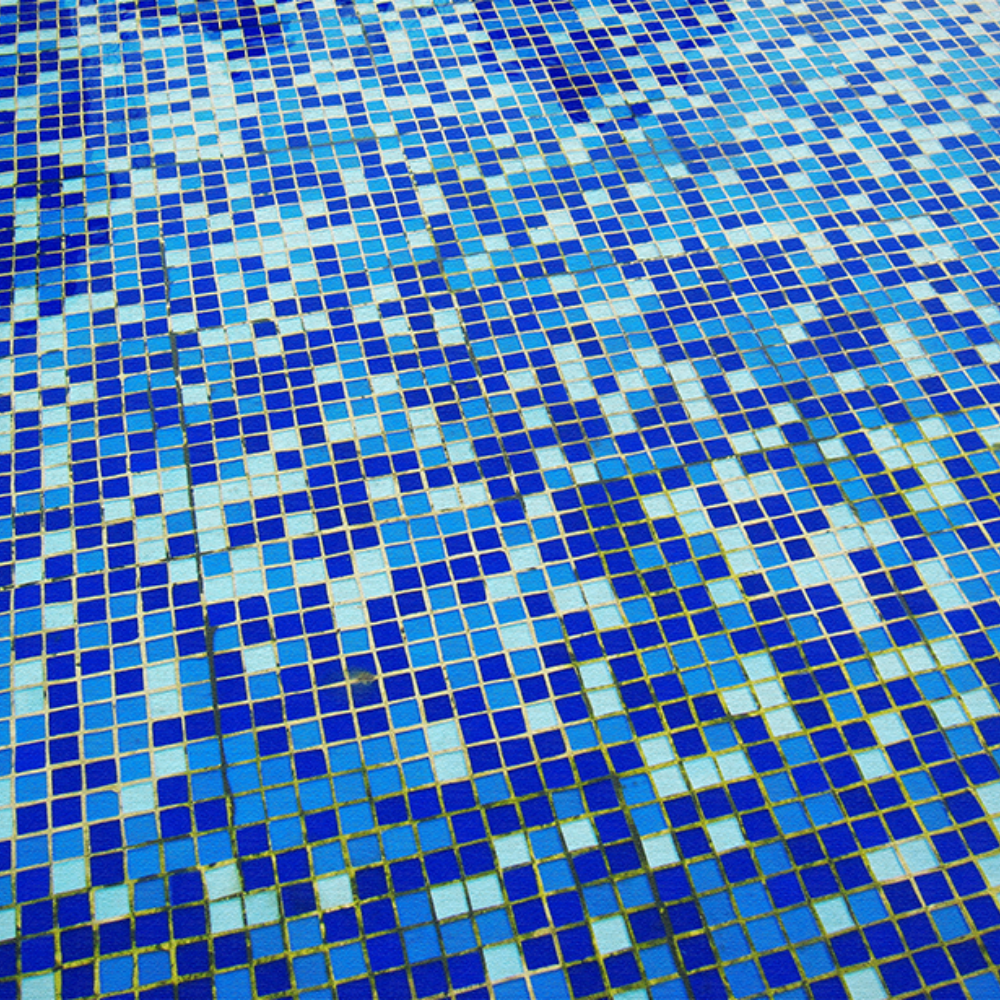
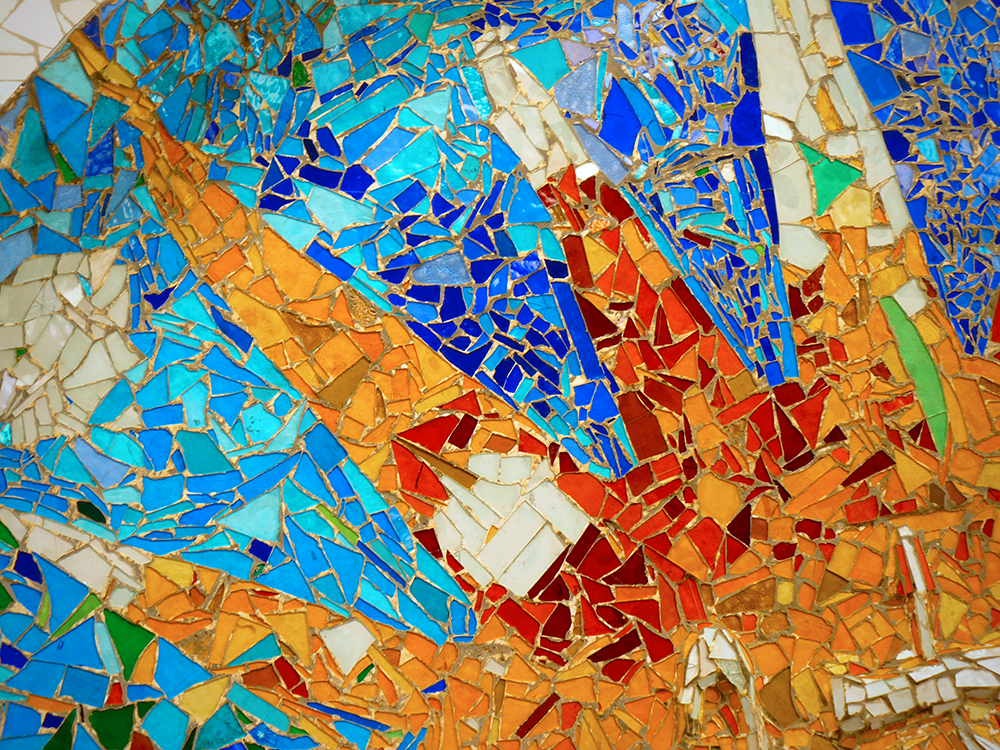
Historical Roots of Mosaic Art
Mosaic art traces its origins back to ancient civilizations.
In ancient Greece, mosaics adorned floors with geometric designs and detailed scenes from mythology, crafted primarily from pebbles.
As the art form evolved, the Romans embraced it, enhancing their villas and public buildings with elaborate floor and wall mosaics depicting scenes of daily life and nature.
This tradition continued into the Byzantine Empire, where mosaics became a key element of religious decor, especially in iconic structures like the Hagia Sophia.
Materials in Mosaic Art
The choice of materials in mosaic art has expanded significantly over the centuries.
Initially, natural pebbles were the primary material, but over time, artisans began using specially made pieces known as tesserae.
These could be made of colored glass, ceramic, marble, or other stones, each offering a unique texture and reflectivity.
For instance, glass tesserae and mirror glass are favored for their ability to reflect light, enhancing the vibrancy of the artwork.
Techniques of Mosaic Making
The mosaic making process can be as varied as the materials used.
One popular method is the indirect method, where artists place tesserae face down onto a paper template.
This approach is particularly useful for large-scale projects like wall mosaics or floor mosaics, as it allows for precise control over the final appearance.
Once the design is complete, it is transferred to its final location, ensuring that the tesserae are perfectly aligned and the artwork is durable.
Geometric Patterns and Color Exploration
Geometric designs are a staple in mosaic art, evident from the intricate patterns seen in Islamic architecture to the detailed borders of Roman mosaics.
The use of color in these patterns is not random; artists carefully select a color palette that complements the space and theme of the mosaic.
This might range from subdued earth tones in a natural scene to vibrant blues and golds in a religious building, demonstrating the artist's skill in manipulating colors to create a harmonious and eye-catching design.
Evolution of Mosaic Art Through the Ages
Mosaic art, a form of expression that dates back to Roman times, has continuously adapted to reflect the cultural and artistic norms of various eras.
Initially, mosaics were predominantly used in religious buildings and affluent homes to depict mythological scenes and daily life, utilizing natural materials like colored stone and glass.
As centuries progressed, the art form saw a transformation, especially noted in the 20th century, where American mosaic artists began incorporating modernist influences, leading to abstract and symbolic designs that went beyond traditional boundaries.
The versatility of mosaic materials has played a crucial role in its evolution.
From the intricate glass stone pieces used in ancient times to the introduction of ceramic tiles in later periods, each material brought a new dimension to mosaic designs.
In contemporary times, artists have even begun to explore unconventional materials like recycled glass and industrial metals, pushing the boundaries of what mosaic art can represent.
This adaptability has ensured that mosaic art remains a popular craft, appealing to various skill levels and tastes.
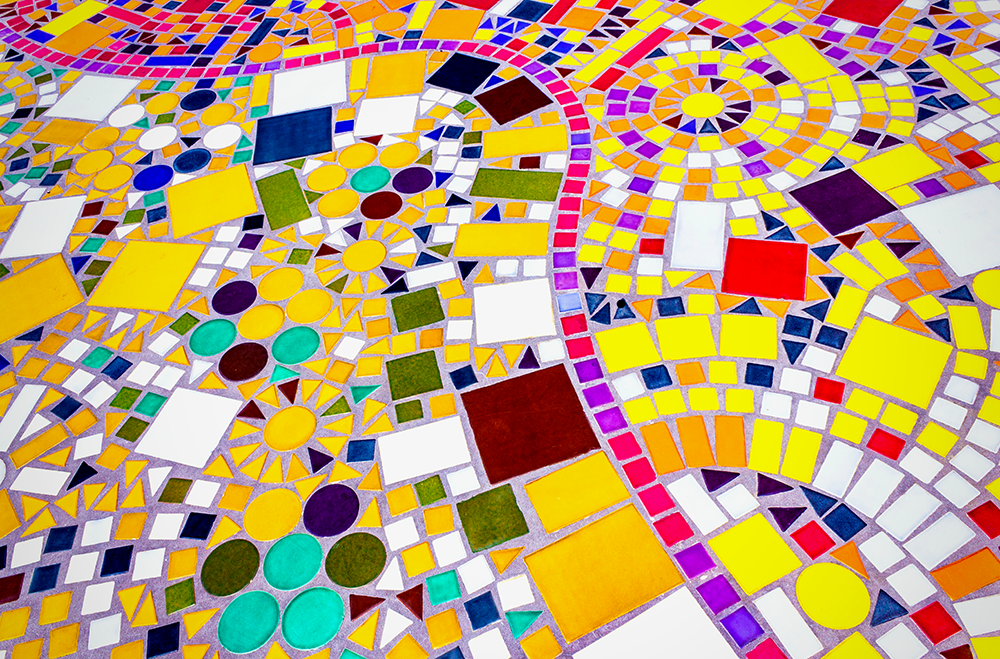
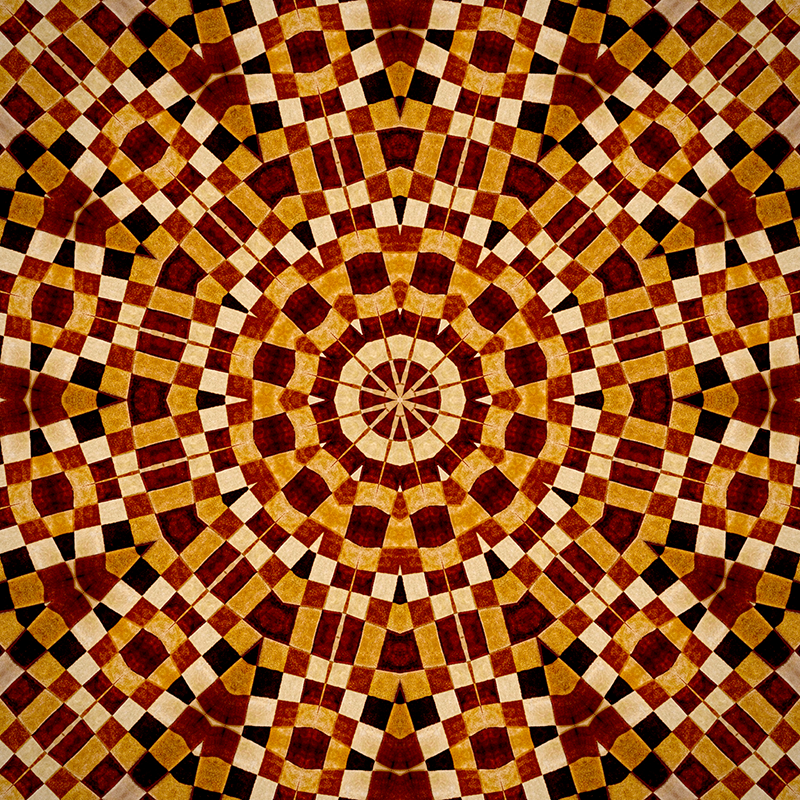
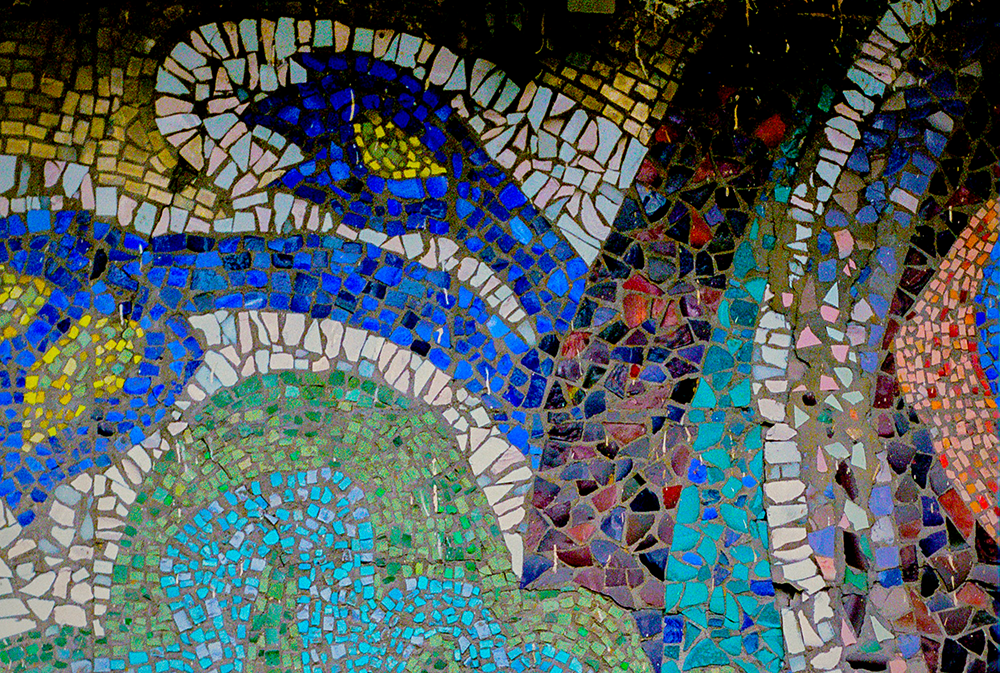
Direct Method in Mosaic Creation
The direct method of mosaic art, often seen as a dance between precision and spontaneity, involves directly placing individual tesserae onto the intended surface.
This technique allows artists to work closely with the mosaic as it evolves, offering a hands-on approach to adjusting the placement and interaction of each piece.
The immediacy of this method not only facilitates a more intuitive placement of tesserae but also ensures that the artist's original vision is vividly preserved, making it ideal for smaller projects or detailed works where precision is paramount.
In contrast to other techniques, the direct method provides a robust framework for artists to experiment with a variety of materials, including tiles, glass, and even pebbles.
This method's adaptability makes it a popular choice for both novices and seasoned professionals.
It allows for a seamless translation of intricate designs and complex patterns directly onto a flat or slightly curved surface.
The result is often a vibrant, tactile piece that invites viewers to not just see but feel the texture and depth of the mosaic.
Influence of 20th Century Art Movements
The 20th century heralded a seismic shift in artistic expression, which profoundly influenced mosaic art.
As painters and sculptors broke away from traditional forms, mosaic artists followed suit, incorporating abstract shapes and vibrant colors into their designs.
This era saw the fusion of Cubism, Surrealism, and Modernism into mosaic patterns, transforming walls and floors into dynamic narratives.
Examples of this can be seen in public installations and galleries worldwide, where the traditional boundaries of mosaic art were expanded to embrace new, imaginative possibilities.
Moreover, the impact of these art movements extended beyond aesthetic innovation.
Artists began to experiment with a variety of materials, including broken tiles, glass, and even unconventional items like mirrors and metal pieces.
This experimentation led to unique textures and light play within mosaic artworks, pushing the envelope of what mosaic art could represent.
The integration of these elements allowed mosaic art to maintain its cultural relevance, adapting to the changing tastes and artistic challenges of the 20th century.
Integration of Mosaic Art in Everyday Objects
Mosaic art, traditionally seen in grandiose settings, has seamlessly woven its way into the fabric of everyday life.
From intricately designed vases that capture the essence of 20th-century art movements to decorative home items like coasters and tabletops, mosaic art elevates ordinary objects into pieces of cultural expression.
These items not only serve their functional purposes but also act as conversation starters, bringing the rich history and aesthetic of mosaic art into daily conversations.
Moreover, the adaptation of mosaic techniques has seen artists embedding small tiles and glass pieces into furniture pieces and kitchenware.
This approach not only preserves the traditional essence of mosaic art but also makes it more accessible and relatable to the modern consumer.
By transforming everyday items like mirrors and picture frames into mosaic masterpieces, artists bridge the gap between historical art forms and contemporary design preferences, making ancient art forms relevant in today's fast-paced, visually driven society.

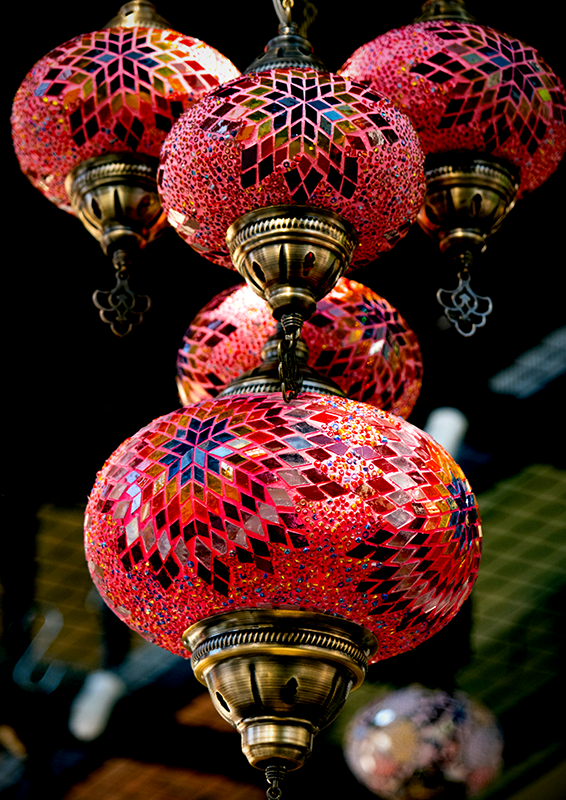
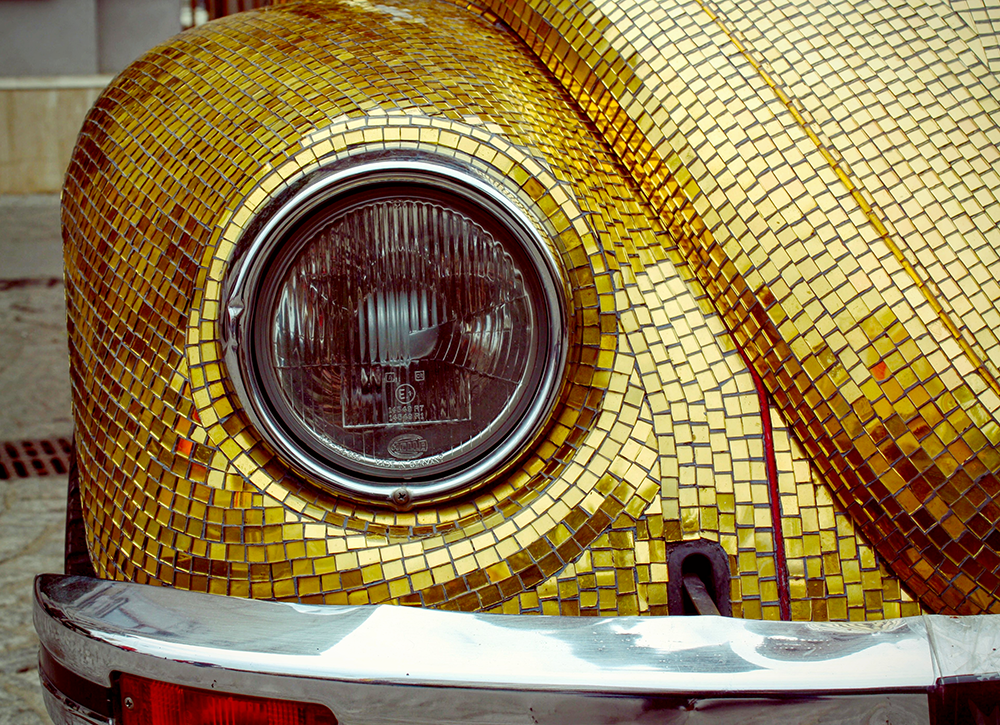
Sustainability of Mosaic Art Materials
Mosaic art isn't just a feast for the eyes; it's a testament to the enduring nature of its components.
The choice of materials in mosaic art spans from traditional stone, glass, and ceramic to more unconventional items like shells and high-tech tesserae.
These materials are not only chosen for their aesthetic appeal but also for their durability and resistance to elements, making mosaics an eco-friendly option for art and architecture.
This sustainability factor appeals to modern artists and builders striving to combine beauty with environmental consciousness.
Moreover, the recycling of materials in mosaic art underscores its role in sustainable practices.
Old ceramic tiles, broken glass, and even discarded industrial metals find new life in mosaic creations, reflecting a commitment to reducing waste.
This aspect not only preserves the environment but also adds a layer of historical and emotional depth to the artwork.
Each piece tells a story, not just of its origin but also of its journey through various forms and functions, embodying the true spirit of transformation and longevity.
Wall Mosaics: A Journey Through Time
Wall mosaics have adorned the interiors and exteriors of structures since the 4th century, capturing the aesthetic and cultural essences of their times.
These mosaics often depicted scenes from mythology, daily life, and nature, transforming plain walls into dynamic narratives that spoke volumes about the society from which they originated.
The use of wall mosaics in ancient times was not just decorative but also a testament to the craftsmanship and artistic aspirations of the era, making them valuable cultural artifacts today.
Modern wall mosaics continue to enchant with their timeless beauty and durability, bridging the gap between ancient and contemporary art forms.
They serve as a canvas for modern artists to express personal or social messages, often incorporating recycled materials and innovative techniques to reflect current trends and environmental concerns.
From public installations to private residences, wall mosaics offer a unique storytelling medium, turning bare spaces into galleries of personal expression and historical reflection.
Mosaic Art in Architectural Design
Incorporating mosaic art into architectural elements has been a practice since the splendor of ancient Rome, where it not only decorated floors and walls but also ceilings, creating immersive environments.
This tradition continues today, with both public and private spaces frequently featuring decorative mosaics that offer more than mere aesthetic appeal; they narrate stories, commemorate historical events, or simply add a touch of luxury.
Ceiling mosaics, particularly, are seen as a mark of opulence in grand hotels and state buildings, drawing eyes upwards to marvel at the spectacle.
Architectural mosaics often serve as focal points in spaces, whether it's a vibrant backsplash in a kitchen, a serene landscape on a hospital wall, or a dynamic pattern wrapping around a commercial building's facade.
The choice of materials—ranging from traditional tiles to more modern glass pieces—plays a significant role in how these mosaics integrate with their surroundings.
For instance, a brick wall may be transformed by embedding small mosaic pieces into the mortar, creating a striking visual contrast that marries rustic charm with artistic flair.
Modern Adaptations of Mosaic Art
In the 20th century, mosaic art saw a resurgence, with artists experimenting with new materials and themes.
Modern mosaics often incorporate elements like fiberglass mesh for reinforcement or use unconventional materials such as beads, shells, and recycled ceramics.
These contemporary works frequently adorn public spaces and are used in community art projects, showcasing the adaptability and enduring appeal of mosaics as a form of public and decorative art.
Mosaic Art in Public and Sacred Spaces
Mosaic installations are particularly prominent in public and religious settings, where they often convey cultural or spiritual narratives.
In places like subway stations or city squares, mosaics serve as durable artworks that withstand the elements while adding aesthetic value to everyday environments.
Similarly, in churches and mosques, mosaics often depict religious figures and scenes, crafted to inspire and instruct the faithful.
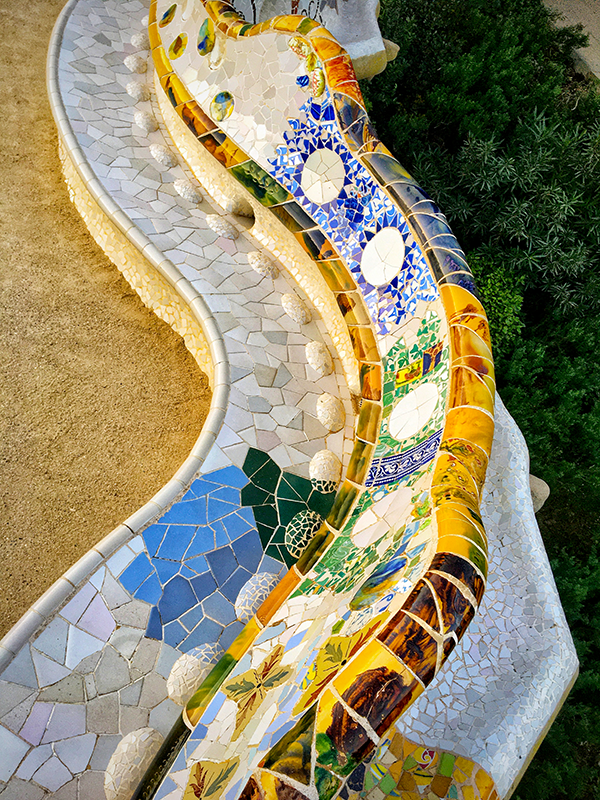
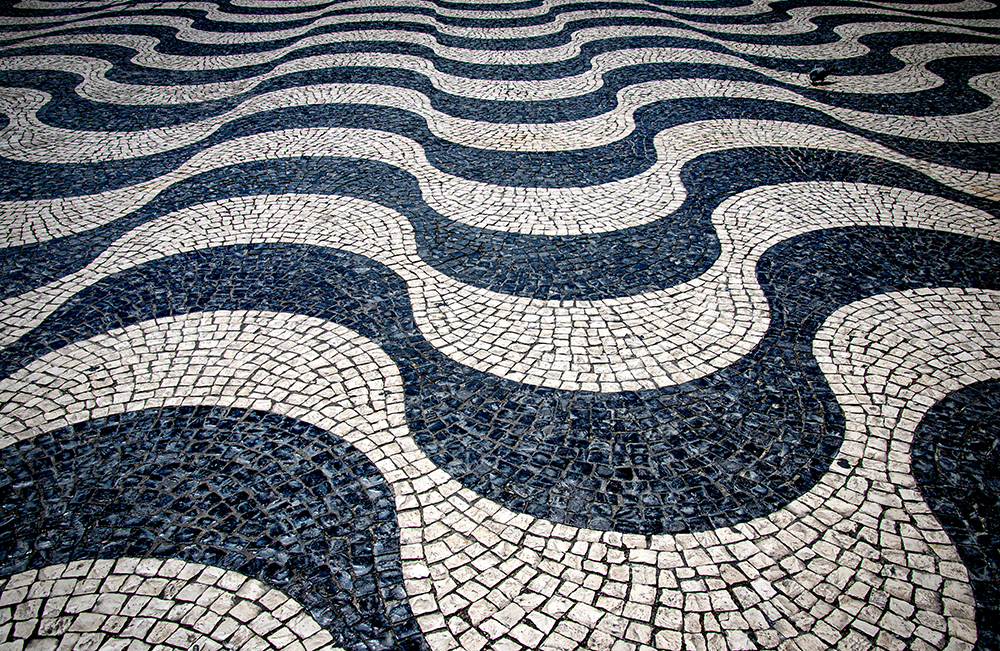
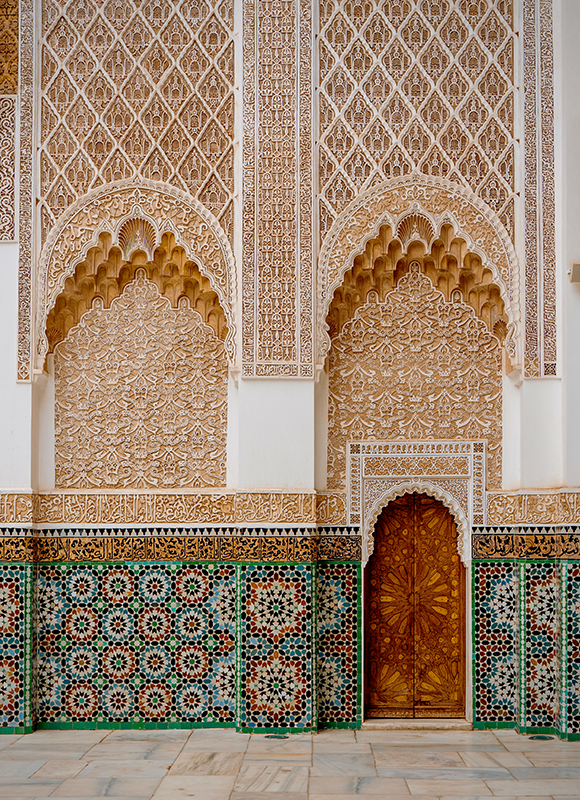
Role of Mosaic Art in Cultural Expression
Mosaic art is not just a decorative element but a powerful medium for cultural expression.
It reflects the materials, aesthetic preferences, and technological capabilities of its time.
For example, Byzantine mosaics are not only artworks but historical documents that offer insights into the religious and social aspects of that era.
Similarly, contemporary mosaics can express community identities and values, making them a dynamic part of urban cultural landscapes.
Fusion of Mosaic Art with Technology
Mosaic art, a timeless craft, has seamlessly woven its way into the fabric of 21st-century technology, enhancing its aesthetic and functional appeal.
Today, digital tools and software are employed to design intricate mosaic patterns that were once painstakingly laid out by hand.
This digital evolution allows for precision in design and a reduction in material waste, making the process more sustainable and accessible.
Artists can experiment with virtual mosaics before the actual installation, ensuring every piece perfectly fits the envisioned pattern.
Furthermore, the integration of technology extends beyond design into the realm of interactive art.
Modern mosaics can now incorporate LED lighting and digital screens, transforming traditional wall mosaics into dynamic art pieces that change with viewer interaction or environmental factors.
This fusion not only preserves the heritage of mosaic art but propels it into a new era where it interacts with viewers, engaging them in a visual dialogue that was previously unattainable.
These advancements make mosaic art more relevant and appealing to a generation that values both tradition and innovation.
Interplay of Mosaic and Painting Techniques
Mosaic art and 20th-century painting techniques share a vibrant dialogue that has enriched both forms.
The 20th century, known for its artistic revolutions, saw painters like Picasso and Braque incorporating elements of mosaic art into their cubist compositions, blurring the lines between these two distinct disciplines.
This cross-pollination allowed for a textured exploration of space and form, where the fragmented nature of mosaics provided a new lens through which to view modern painting.
Furthermore, the influence of mosaic aesthetics can be seen in the abstract expressionist movements, where artists experimented with color splashes and irregular patterns reminiscent of mosaic layouts.
This era's bold experimentation with materials and techniques, such as Jackson Pollock’s drip paintings, echoes the unpredictable yet harmonious assemblies found in traditional mosaic art.
The integration of these elements showcases how 20th-century artists borrowed from ancient crafts to forge new visual languages.
Mosaics' Role in Architectural Landmarks
Mosaic art has not only adorned the interiors of ancient sanctuaries and basilicas but has also played a pivotal role in defining the character of 20th-century architectural landmarks.
Iconic buildings such as the Watts Towers in Los Angeles, constructed from 1921 to 1954, feature extensive mosaic decorations made from broken glass and ceramics, embodying the resilience and eclectic spirit of the community.
These structures stand as testaments to the enduring appeal of mosaic art in modern constructions, bridging historical artistry with contemporary aesthetics.
In addition, the use of mosaic murals during the Art Deco period brought a splash of color and sophistication to public and private spaces alike.
The National Academy of Sciences building in Washington, D.C., for instance, showcases intricate mosaic installations that encapsulate the era’s penchant for geometric precision and thematic depth.
Through these examples, it becomes clear that mosaic art has been instrumental in shaping not just the visual but also the cultural contours of 20th-century architecture, making it a crucial element in the tapestry of modern design.
Mosaic Art's Role in Reinventing Public Spaces
Mosaic art has long been a staple in public spaces, offering more than just decoration; it provides a narrative that enriches the community's cultural landscape.
In urban areas, wall mosaics often depict historical events, local legends, or cultural milestones, serving as a canvas that reflects the community's identity and values.
These artworks not only beautify the space but also foster a sense of belonging and pride among residents. They transform bland urban walls into vibrant forums for public art, accessible to all.
In addition to enhancing community ties, mosaic art in public spaces often sparks conversations about art and history, making it an educational tool as well as a decorative one.
For instance, a wall mosaic in a subway station might illustrate the area's development from its early days to the present, providing commuters with visual insights into their city's evolution.
This educational aspect, combined with the aesthetic appeal of mosaics, enriches the daily lives of city dwellers, turning mundane routines into immersive cultural experiences.
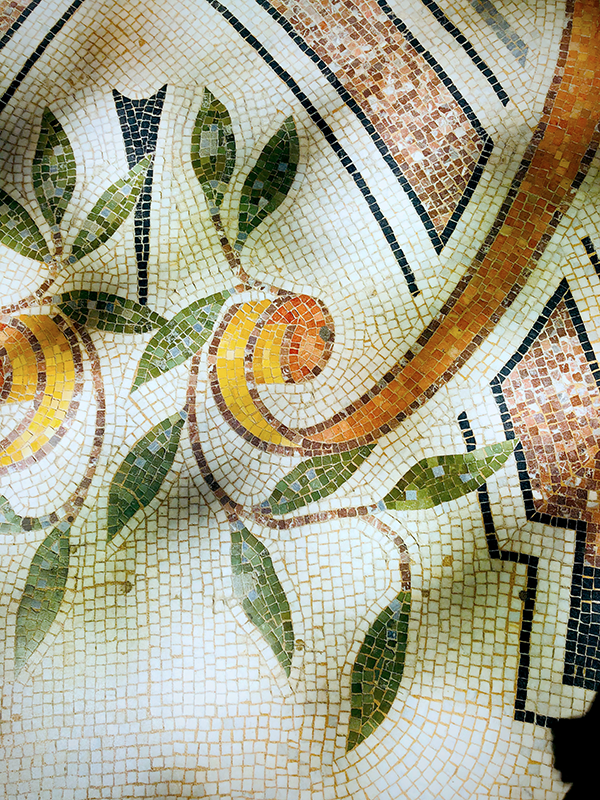
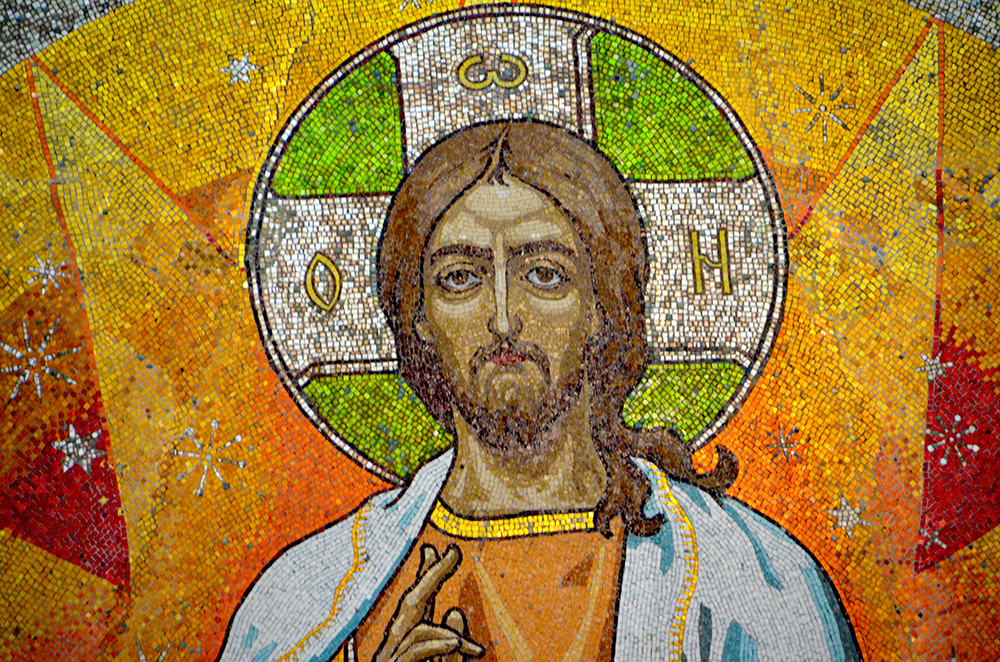
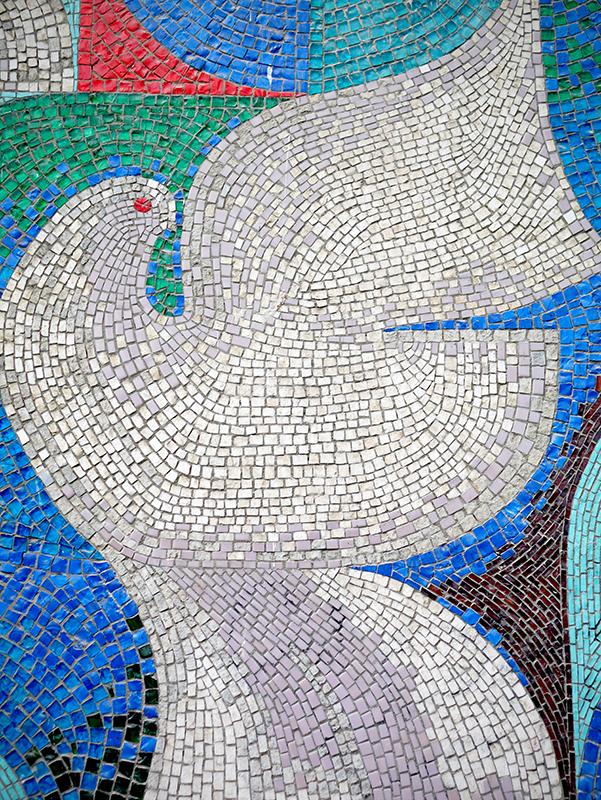
Psychological Impact of Mosaic Art
Engaging with mosaic art is like reading a complex novel; it draws you in layer by layer.
The intricate details and the labor-intensive process involved in creating each piece evoke a sense of wonder and respect for the art form.
This engagement has a profound psychological impact on viewers, often evoking feelings of awe and inspiration.
The visual complexity of mosaics can stimulate cognitive functions, enhancing creativity and problem-solving skills by challenging the viewer to interpret and connect various elements within the artwork.
Furthermore, the therapeutic aspects of creating mosaic art cannot be overlooked.
The act of placing each tile serves as a meditative practice, helping artists and hobbyists alike to achieve a mindful state of focus and calm.
This form of art therapy is not only beneficial for mental health but also promotes emotional expression through the use of colors and textures.
Mosaic art provides a unique canvas for personal expression, where artists can weave their emotions and narratives into a lasting visual legacy.
Mosaics' Influence on Modern Paintings
Mosaic art has left a lasting imprint on the canvas of modern paintings, with numerous artists incorporating mosaic techniques into their works to add texture and depth.
This blending of art forms is particularly evident in the way contemporary painters use fragmented, mosaic-like patterns to create dynamic, vibrant compositions that echo the complexity and richness of mosaics.
These artworks often reflect the geometric precision and color exploration that are hallmarks of traditional mosaic art, yet are distinctly modern in execution and concept.
In the realm of photography and digital art, the influence of mosaic patterns is unmistakable.
Artists frequently use a mosaic filter or technique to deconstruct and reconstruct images, creating a new layer of meaning and interpretation.
This digital reinterpretation of mosaic art highlights its versatility and enduring appeal, proving that ancient techniques can find new life in modern artistic expressions.
By integrating the old with the new, artists continue to expand the boundaries of how mosaic art can influence contemporary visual culture.
Mosaic Art in Digital and Multimedia Forms
As technology advances, so too does the scope of mosaic art, embracing digital and multimedia formats to stunning effect.
Today, artists combine traditional mosaic techniques with digital tools to create complex, layered works that challenge the viewer's perception.
Digital mosaics often incorporate elements from photographs, digital images, and even animated sequences, creating interactive experiences that are displayed in galleries and urban spaces.
These pieces often reflect contemporary themes and narratives, bridging historical art forms with modern digital culture.
In addition to purely digital creations, hybrid forms of mosaic art have emerged, where physical tiles are used to create representations of digital pixels.
This approach plays on the visual similarity between pixels and mosaic tiles, creating a dialogue between ancient and contemporary forms of image-making.
Such works not only highlight the versatility of mosaic art but also its ability to adapt and thrive in the digital age.
These innovative approaches ensure that mosaic art continues to be a relevant and evolving form of artistic expression, captivating new audiences with its blend of the old and the new.
Unveiling the Timeless Beauty of Mosaic Art
Mosaics are a complex and captivating art form that combines artistic skill with meticulous planning and execution.
It's clear that this form is much more than just an artistic endeavor—it's a bridge connecting past and present, tradition and innovation.
Mosaic art not only showcases human creativity but also echoes the cultural and technological advancements of each era.
From the ancient pebble mosaics of Greece to the sophisticated glass tesserae of modern installations, mosaics have adapted to reflect the cultures and technologies of their times; mosaics continue to be a vital and vibrant expression of human creativity and cultural heritage.
Whether set beneath our feet in ancient ruins or displayed on the bustling walls of contemporary cities, mosaics continue to enchant and inspire, proving that this art form is truly timeless.
Let's keep exploring and appreciating the rich tapestry of history and artistry that mosaics bring to our world.

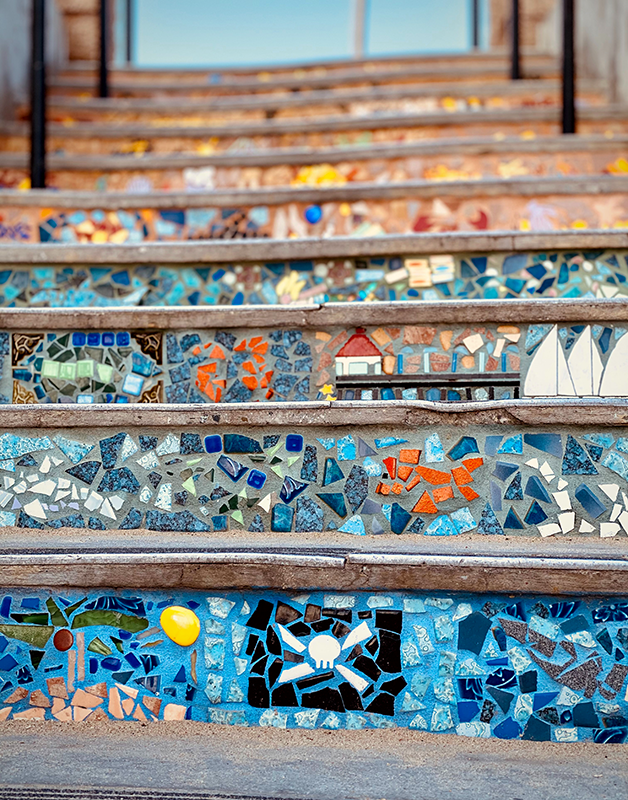

Mosaic FAQs
Dive into the colorful and intricate world of mosaic art!
Whether you're a seasoned artist or a curious beginner, understanding the basics of mosaic materials, techniques, and applications can enhance your appreciation and skill in this timeless craft.
Here, we answer some of the most frequently asked questions to help you get started on your mosaic journey or to deepen your existing knowledge.
Let's explore the vibrant possibilities that mosaic art has to offer!
What are the most common materials used in mosaic art?
Common materials include ceramic tesserae, colored glass, stones, and in modern contexts, items like beads and recycled ceramics.
How are large mosaic installations created?
Large installations often use the indirect method, where the design is first created face down on a paper template and then transferred to the final location, ensuring precision and durability.
Can mosaic art be used for outdoor projects?
Yes, mosaics are ideal for outdoor projects due to their durability and resistance to weather elements, making them popular for public art installations and garden decorations.
What tools and supplies are essential for starting a mosaic project?
To begin a mosaic project, you'll need basic supplies such as mosaic tiles or tesserae, adhesive (such as mortar or tile adhesive), grout, a grout spreader, nippers or tile cutters, and safety equipment like gloves and goggles. A base for your mosaic, like a tabletop, wall, or floor surface, is also essential.
What are the different techniques used in creating mosaics?
There are several techniques in mosaic art, including the direct method, where tiles are applied directly to the mounting surface; the indirect method, where tiles are first laid on a temporary surface like paper and then transferred; and the double indirect method, suitable for complex designs and uneven surfaces.
How do I choose the right grout color for my mosaic?
Choosing the right grout color can either highlight your tiles or blend seamlessly with the design. For a harmonious look, select a grout color that complements the dominant color of your tiles. If you want the tiles to stand out, choose a contrasting grout color to make the design pop.
What is the best way to maintain and clean mosaic art?
To maintain and clean mosaic art, regularly wipe the surface with a damp cloth to remove dust. For deeper cleaning, use mild soap and water, but avoid harsh chemicals that can damage the tiles or grout. Outdoor mosaics may require resealing over time to protect against weather elements.
Can I create a mosaic on curved surfaces?
Yes, mosaics can be adapted to curved surfaces such as vases, bowls, or columns. This requires more careful planning and cutting of tiles to ensure they fit the curvature properly. Using smaller tiles or pieces can make the process easier and result in a smoother finish.
What are some creative ideas for mosaic projects?
Mosaic art isn't limited to traditional surfaces; you can create mosaic designs on picture frames, mirrors, stepping stones, or even furniture like chairs and tables. For a unique project, consider making a mosaic mural on a wall or a decorative pathway in your garden.
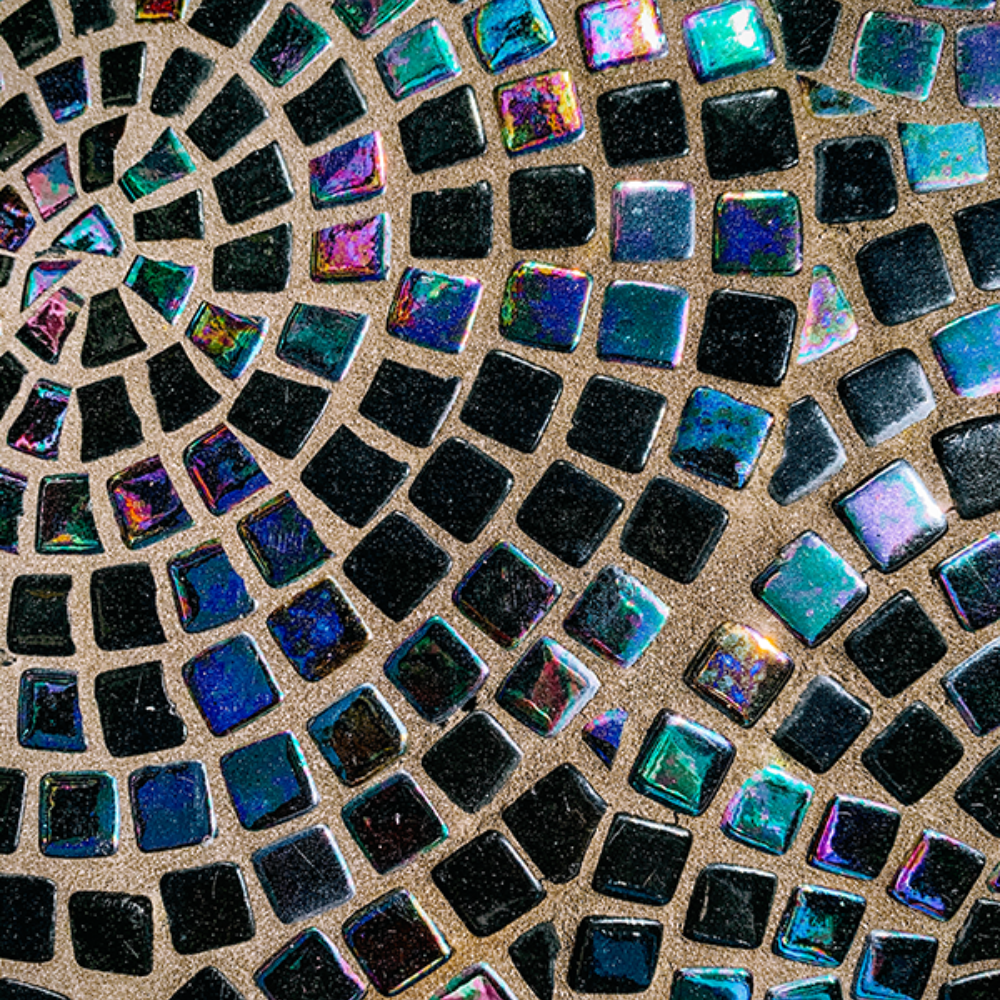
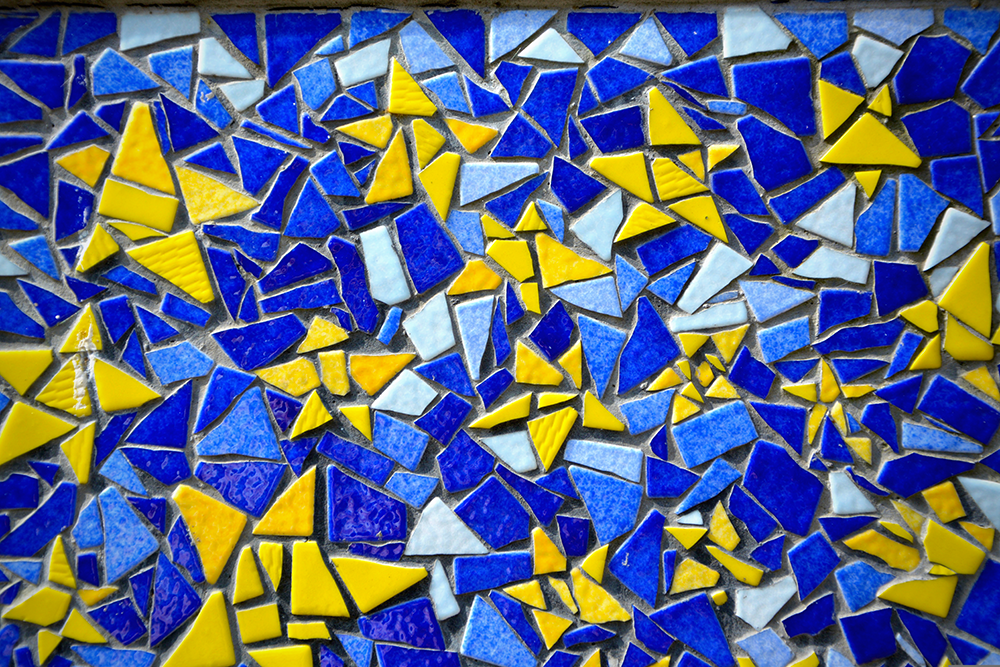

Eager to learn more about creating mosaics? Check out Mosaic Moments' video!
Want even more content about creativity and art?
Be sure to check out all of our creative chronicles!
Interested in exploring the world of mosaics?
Check out some of our other articles:
-What materials can you use for mosaics?
-What are the 3 main types of mosaics?
-What is another word for mosaic?
-Who is a famous mosaic artist?
